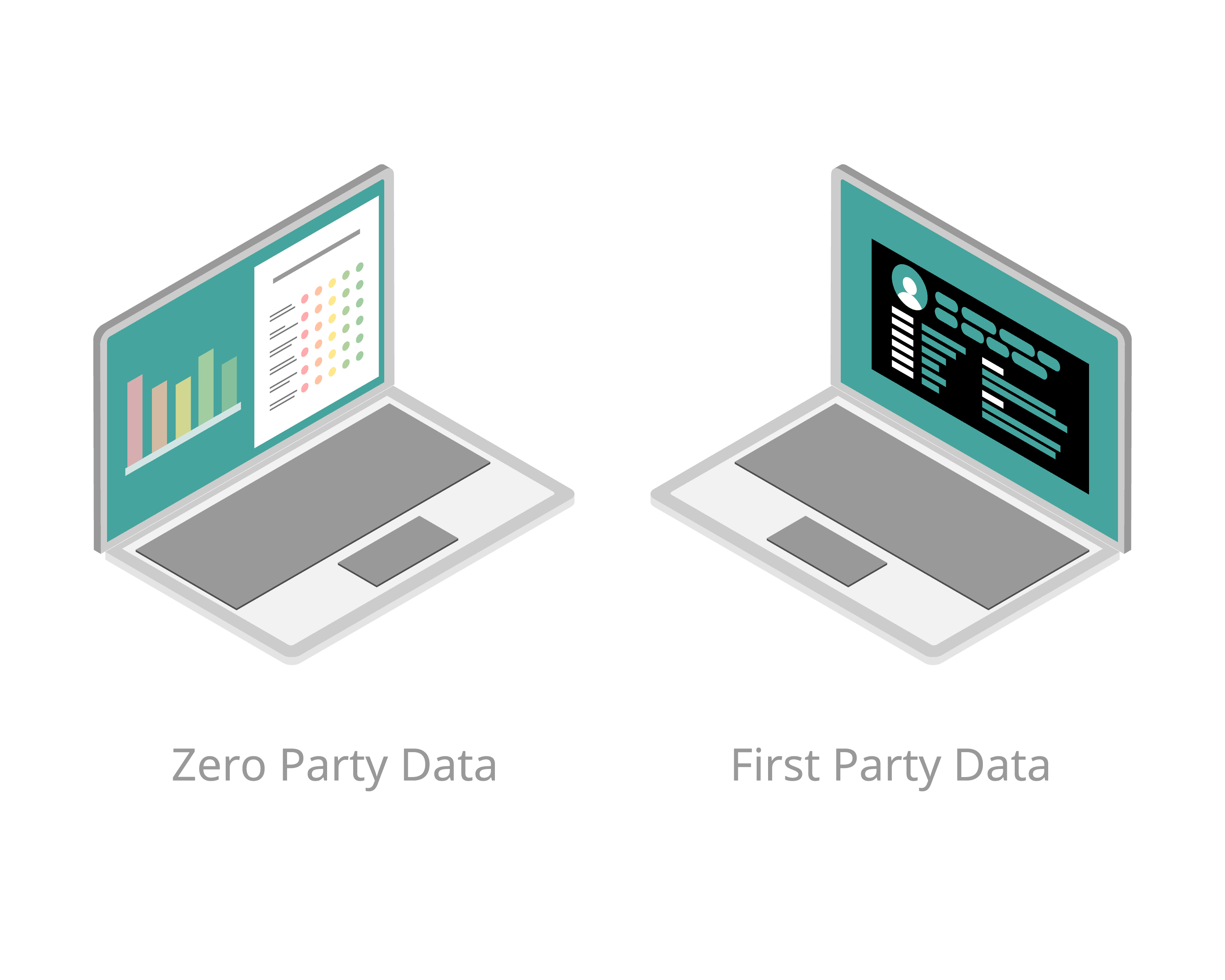While they may sound similar, there are key distinctions between them that marketers need to understand. In this article, we will explore the differences between zero-party data and first-party data, their collection methods, benefits, and best practices for utilizing them effectively.
Understanding Zero-Party Data:
Zero-party data refers to information that customers voluntarily and explicitly provide to businesses. It is the most accurate and reliable type of data as it is directly shared by the individuals themselves. This data is often obtained through interactions such as surveys, preference centers, feedback forms, and quizzes. Zero-party data enables businesses to gain valuable insights into customer preferences, interests, and intent.
Exploring First-Party Data:
First-party data, on the other hand, is the information that businesses collect directly from their customers through their own channels and touchpoints. It includes data from website analytics, CRM systems, transactional records, and other sources. First-party data provides businesses with a deeper understanding of their existing customer base, allowing for targeted marketing campaigns and personalized experiences.
Key Differences Between Zero-Party Data and First-Party Data:
1. Ownership and consent:
Zero-party data is explicitly shared by customers, giving them full ownership and control over their information. In contrast, first-party data is collected by the business itself, and the ownership lies with the company. While both types require consent, zero-party data places more emphasis on the customer’s active involvement in providing information.
2. Voluntary nature of data collection:
Zero-party data is willingly provided by customers, making it highly accurate and reliable. In contrast, first-party data is collected as customers engage with a business’s channels or make purchases. The voluntary nature of zero-party data ensures that the information shared is more intentional and specific to individual preferences.
3. Level of customer involvement and engagement:
Zero-party data collection often involves interactive experiences, such as quizzes or surveys, that encourage customers to actively engage and share their preferences. First-party data collection, on the other hand, typically occurs in the background as customers interact with a business’s website or make transactions. Zero-party data allows for a more engaging and participatory experience for customers.
4. Contextual relevance and accuracy:
Zero-party data provides businesses with highly contextual and relevant information as customers explicitly state their preferences, interests, and needs. This enables businesses to deliver personalized experiences and tailor their marketing messages effectively. First-party data, while still valuable, may not provide the same level of specificity as it relies on implicit signals and behavior.
5. Use cases and applications:
Zero-party data is particularly valuable for personalization, customization, and targeted marketing campaigns. It allows businesses to create relevant offers, recommendations, and experiences that resonate with individual customers. First-party data, on the other hand, is more useful for customer segmentation, identifying patterns and trends, and making data-driven business decisions.
Some Additional Points of Difference
1. Data Collection Context:
Zero-Party Data: Zero-party data is collected more directly and deliberately. Customers willingly provide information in response to specific requests or interactions with a business. This data is self-declared and can include preferences, interests, and intentions.
First-Party Data: First-party data is collected passively as customers engage with a business’s owned channels or platforms. It is gathered through website interactions, purchase history, app usage, and other touchpoints. This data is observed and inferred rather than explicitly stated by the customer.
2. Granularity and Depth of Insights:
Zero-Party Data: Since customers actively provide zero-party data, it often provides more detailed and granular insights into their preferences, needs, and expectations. This level of specificity enables businesses to personalize their offerings and marketing campaigns to a greater extent.
First-Party Data: First-party data provides a broader view of customer behavior and interactions with the business. It offers insights into patterns, trends, and general customer characteristics. While it may not provide the same level of specific details as zero-party data, it still offers valuable information for segmentation and targeting.
3. Scale and Coverage:
Zero-Party Data: Zero-party data is typically collected from a smaller subset of customers who willingly engage and provide information. It may not have the same scale or coverage as first-party data, as it depends on customers’ active participation.
First-Party Data: First-party data has the advantage of scale and coverage. It is collected from a wider range of customers who interact with a business’s various touchpoints, including website visits, app usage, and purchase transactions. This larger sample size provides a more comprehensive understanding of customer behavior.
4. Reliability and Accuracy:
Zero-Party Data: Zero-party data is considered highly reliable and accurate as it is directly provided by the customers themselves. Since customers voluntarily disclose their preferences and intentions, businesses can have confidence in the authenticity of this data.
First-Party Data: First-party data is also reliable but may be subject to interpretation and inference. It relies on observed behavior and interactions, which can sometimes be influenced by external factors or may not fully capture the customer’s true preferences.
5. Dynamic vs. Static Data:
Zero-Party Data: Zero-party data is dynamic and can be updated or modified by customers over time. As customers’ preferences or circumstances change, they have the opportunity to update their information, ensuring that businesses have the most current insights.
First-Party Data: First-party data is relatively static and captures a snapshot of customer behavior and preferences at a specific point in time. It may not reflect the latest changes in customers’ preferences or evolving needs.
By understanding these differences, businesses can better appreciate the unique qualities and benefits of both zero-party data and first-party data, allowing them to leverage these types of data effectively in their marketing strategies and customer experiences.
Evaluating Use Cases for Zero-Party Data:
Zero-party data is a powerful tool for businesses across various industries. It enables personalization at scale, allowing companies to offer tailored products and services, create customized marketing campaigns, and deliver exceptional customer experiences. By understanding individual preferences and intent, businesses can improve customer satisfaction and build long-lasting relationships.
Leveraging First-Party Data in Business Strategies:
First-party data serves as the foundation for customer-centric strategies. It allows businesses to segment their customer base effectively, identify high-value customers, and deliver targeted messages to specific segments. By leveraging first-party data, businesses can enhance customer retention, and loyalty programs, and uncover cross-selling and upselling opportunities.
Best Practices for Utilizing Zero-Party Data and First-Party Data:
To maximize the benefits of both zero-party data and first-party data, businesses should follow these best practices:
- Obtain explicit consent and maintain transparency: Clearly communicate to customers how their data will be used and seek their consent before collecting any information.
- Prioritize data privacy and security: Implement robust security measures to protect customer data and ensure compliance with relevant regulations.
- Integrate and analyze data sets: Combine zero-party data and first-party data to gain a comprehensive view of customers, enabling more effective decision-making and personalization.
- Stay compliant with regulations: Stay up to date with data protection regulations, such as GDPR and CCPA, to ensure legal and ethical data usage.
Conclusion:
Zero-party data and first-party data are both valuable assets for businesses looking to enhance their marketing efforts and improve customer experiences. While zero-party data provides explicit insights into customer preferences, first-party data offers a broader understanding of customer behavior. By leveraging both types of data effectively and following best practices, businesses can gain a competitive edge, deliver personalized experiences, and build strong customer relationships in today’s data-driven landscape.
Blog Last Updated on 8 months by New Path Digital






